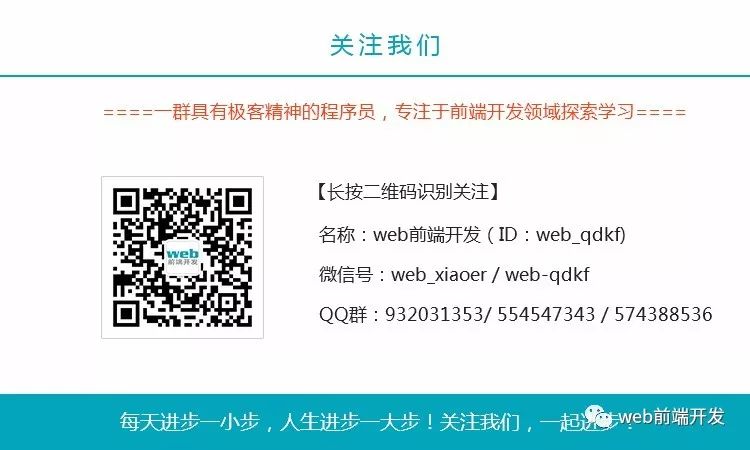
Common Understanding of IT Terminology:
There are many terms in IT that are hard to understand? Actually, it’s quite simple, let’s look at some examples.
01
Everyone is drinking beer, and then you sit down…
If you bring your own drinks, that’s called BYOD.
If you pour yourself a cup of cola, that’s called low configuration.
If you pour yourself a cup of beer, that’s called standard configuration.
If your colleague pours you a cup of white liquor, that’s called recommended configuration.
If you pour yourself a cup of tea that looks just like beer, that’s called a Trojan horse.
If you pour yourself a cup of cola with a few drops of vinegar, which not only looks like beer but also doesn’t steam and has bubbles, that’s called a super Trojan horse.
If you pretend to drink but secretly pour it out, that’s called ARP spoofing.

02
When everyone has arrived, the feast begins…
You take a small sip alone, that’s called unit testing.
You tell the person next to you that we can be casual, that’s called cross testing.
But he says no, we need to finish this cup, that’s called stress testing.
Then you say let’s all drink together, that’s called internal testing.
At this point, the boss raises a toast to everyone, that’s called public testing.

03
After three rounds of dishes, you stop being polite…
You toast someone across the table, that’s called P2P.
You toast someone across the table, he toasts you back, and you toast him again… that’s called TCP.
You toast each person at the table, that’s called token ring.
You toast someone across the table, that’s called unicast.
You say let’s all drink together, that’s called multicast.
You say as long as you are brothers, drink this cup, that’s called broadcast.
But your boss hears this and gets unhappy, saying only brothers? Three cups as punishment. That’s called a bomb.
But your subordinate hears this and gets unhappy, saying I’ll take a sip, you drink a cup, that’s called a malicious attack.
Someone comes over to toast you, and you say no, you have to pass my checkpoint first, that’s called a firewall.
Your little brothers come over to toast you, that’s called one-to-many.
You are the boss, and everyone comes over to toast you, that’s called a server.
You are the boss, and a bunch of people come over to toast you, each with a cup, and you suddenly can’t handle it, that’s called DDoS.

04
The drink is the same, but the way of drinking is different…
You drink a cup, the boss takes a sip, that’s called C#.
You drink a cup, the girl takes a sip, that’s called VB.
You drink a cup, your older brother drinks half a cup, that’s called C++.
You drink half a cup, your younger brother drinks a cup, that’s called assembly.
You drink a cup, and your partner drinks a cup, that’s called C.

05
The drink is the same, but the drinkers are different…
The more you drink, the redder your face gets, that’s called frequent allocation and release of resources.
The more you drink, the whiter your face gets, that’s called resources not being released.
You’re already drunk, yet you say I can still drink, that’s called insufficient resource quota.
You clearly can drink, yet you say I’m already drunk, that’s called resource reservation.
You go to the bathroom after drinking for a while, that’s called cache.

06
After three rounds of drinks, you should also move a bit…
You walk from table to table, that’s called round-robin.
You suddenly see a beautiful girl at a certain table and walk over, that’s called priority.
You sit down and don’t plan to leave anymore, that’s called a deadlock.
Your boss raises a toast and invites you over, you have to go, that’s called activation event.
You toast a table of people, but they say no, we only drink white liquor, so you drink white liquor too, that’s called localization.
You go to the bathroom after drinking for a while, that’s called insufficient buffer.
You toast the boss, but the boss is surrounded, so you can only stand in the outer circle, that’s called queuing.
You finally reach the inner circle, carefully step forward, that’s called accessing the critical section.
You pat the boss on the shoulder and say let’s have a drink, that’s called crossing the boundary.
You don’t know how many rounds you’ve had, you can only say two words, bottoms up, that’s called UDP.
But someone runs over with a bottle saying, I didn’t drink with you earlier, that’s called packet loss.

07
The result of drinking at the end is the same…
You suddenly run to the bathroom, that’s called exception capture.
You vomit in the bathroom but feel fine, that’s called clearing memory.
You vomit on the table and feel very ashamed, that’s called program exception.
You vomit in front of the boss and feel very scared, that’s called system crash.
You vomit on the boss and can only faint, that’s called hardware shock.
You go home and promise your wife not to drink for a year, that’s called SLA.
Common Development Tools:
Team Collaboration: WinCVS, TortoiseSVN, TortoiseHG
Text Comparison: Beyond Compare
Text Editors: UltraEdit, EmEditor, Notepad3, Vim, Emacs
Network Packet Capture: Wireshark, Ethereal
Design Tools: Viso, Rational Rose, PowerDesigner, DRwin
Project Management: Project, ClearQuest, ClearCase
Issue Tracking: Bugzilla, Jira, TestDirector
Database Clients: Toad, PL/SQLDeveloper
Remote Tools: winscp, flashfxp, SecureCRT, putty, Xmanager
Virtual Machines: Vmware, Oracle VM VirtualBox
Stress Testing Tools: WinRunner, LoadRunner, Jmeter, webbench, ab(apache)
What distributions are available for Linux/Unix?
Suse Linux, Red Hat Linux, Ubuntu Linux, Centos Linux, Debian Linux, Gentoo Linux, IBM Aix, Sun Solaris, HP Unix, etc.
What are some popular databases?
Oracle, SQL Server, IBM DB2, Sybase, MySQL, PostgreSQL, etc.
What are some popular embedded databases?
BerkeleyDB, hsqldb, SQLite, Derby, etc.
What are some popular distributed memory caches/NoSQL databases?
Memcached, Cassandra, Redis, MongoDB, Hypertable, etc.
What is the organizational structure of a development team?
Project Manager, Product Manager, System Architect, Developers, Testers, Designers, etc.

Some Professional Terms in the IT Industry:
SDK: SDK (Software Development Kit) is a collection of tools used by software engineers to develop applications for specific software packages, software frameworks, hardware platforms, operating systems, etc.
Middleware: Middleware is a type of independent system software or service program.
IDE: Integrated Development Environment.
OOP: Object Oriented Programming (OOP) is a computer programming architecture.
OOS: Open Source Software is defined as software whose source code can be used by the public, and the use, modification, and distribution of this software are not restricted by licenses.
API: API (Application Programming Interface) is a set of predefined functions that allow applications to access a set of routines based on certain software or hardware without needing to access the source code or understand the details of the internal workings.
BUG: A defect or vulnerability in the program.
DBMS: Database Management System.
NoSQL: NoSQL refers to non-relational databases. With the rise of web 2.0 sites, traditional relational databases have struggled to handle the scale and high concurrency of large-scale dynamic websites, revealing many insurmountable problems, while non-relational databases have rapidly developed due to their inherent characteristics.
SOA: Service-Oriented Architecture.
GUI: Graphical User Interface (GUI) is a computer user interface that displays information graphically.
OS: Operating System.
SQL: Structured Query Language is a database query and programming language used to access, query, update, and manage relational database systems.
UML: Unified Modeling Language is used for visual modeling of software-intensive systems.
URL: Uniform Resource Locator, also known as a web address, is the standard address of a resource on the internet.
URI: A Universal Resource Identifier locates every resource available on the web—HTML documents, images, video snippets, programs, etc.
HTML: Hypertext Markup Language is a markup language used to describe web documents.
HTML5: An extension of HTML with more tags added on top of HTML4.
XML: Extensible Markup Language is similar to HTML and is a Standard Generalized Markup Language.
YAML: YAML stands for “YAML Ain’t Markup Language.”
RIA: Rich Internet Applications are highly interactive applications that provide a rich user experience and powerful client functionality.
Thin Client: A basic computer terminal in a client-server network that requires no application programs.
C/S Structure: Client/Server structure is a well-known software system architecture that reduces communication overhead by reasonably distributing tasks between the client and server, requiring a client to be installed for management operations.
B/S Structure: Browser/Server structure.
Java: A cross-platform object-oriented programming language developed by Sun Microsystems in May 1995, encompassing the Java programming language and Java platform (Java SE, Java EE, Java ME).
.NET: .NET is Microsoft’s technology for implementing XML, Web Services, SOA, and agility.
C#: (C Sharp) is a programming language tailored for the .NET Framework by Microsoft, combining the powerful features of C/C++ with the ease of use of Visual Basic, being the first component-oriented programming language, and also an object-oriented programming language like C++ and Java.
Perl: A scripting language.
Python: An object-oriented, interpreted programming language.
Ruby: A scripting language designed for simple and quick object-oriented programming.
C++: A widely used programming language.
PHP: A server-side scripting language embedded in HTML documents, with a style similar to C, widely used.
JavaScript: A scripting language widely used in client-side web development to add dynamic functionality to HTML web pages, such as responding to user actions.
CSS: Cascading Style Sheets define how HTML elements are displayed and control the appearance of web pages.
SE: Software Engineering is a discipline that studies the construction and maintenance of effective, practical, and high-quality software using engineering methods.
SDLC: Systems Development Life Cycle.
XP: Agile Development.
Scrum: An iterative incremental software development process often used in agile software development.
Waterfall Model: A software development process.
Unit Testing: The lowest level of testing activity that must be conducted during software development, where software units are tested in isolation from other parts of the program.
Integration Testing: Also known as assembly testing or joint testing.
Functional Testing: Validating the various functionalities of the product based on functional test cases.
System Testing: Testing the entire product system to verify that it meets the defined requirements and to identify any discrepancies.
Regression Testing: Re-testing after modifying old code to confirm that the modifications have not introduced new errors or caused other code to fail.
Linux: A free and open-source Unix-like operating system.
Unix: A powerful multi-user, multitasking operating system supporting multiple processor architectures.
Solaris: An operating system developed by Sun Microsystems.
Android: An open-source operating system based on Linux, primarily used in portable devices.
iOS: The operating system developed by Apple for the iPhone.
SSE: Senior Software Engineer.
Software Testing Engineer: A person who understands product functionality requirements and tests the software for errors, determining its stability.
Designer: Typically an arts graduate responsible for web design, requiring knowledge of PHOTOSHOP/CSS/HTML/JAVASCRIPT.
Architect: An emerging profession in the software industry.
Software Project Manager: A person engaged in managing software projects or information systems integration projects, possessing strong communication and analytical skills.
Product Manager: Also known as Brand Manager.
Internet Product Manager: Responsible for planning and promoting internet products and managing their lifecycle.
This article ends here~
